 There are many ways to know an animal. Scientists often get to know an organism by killing it, dissecting it, and becoming intimate with every organ and each tiny process. I prefer to simply observe Life playing out in its plant and animal forms, in its beautiful dance of self-volition and primal directive. I believe there is no need to kill an animal when you can watch its behavior and record what you see, hear, smell and feel in words and other forms of art.
There are many ways to know an animal. Scientists often get to know an organism by killing it, dissecting it, and becoming intimate with every organ and each tiny process. I prefer to simply observe Life playing out in its plant and animal forms, in its beautiful dance of self-volition and primal directive. I believe there is no need to kill an animal when you can watch its behavior and record what you see, hear, smell and feel in words and other forms of art.
But I went to the bumblebee workshop anyway. I knew that I could opt out of doing anything to harm or kill bees and I really wanted to learn more about identifying these easy-to-see members of hymenoptera.
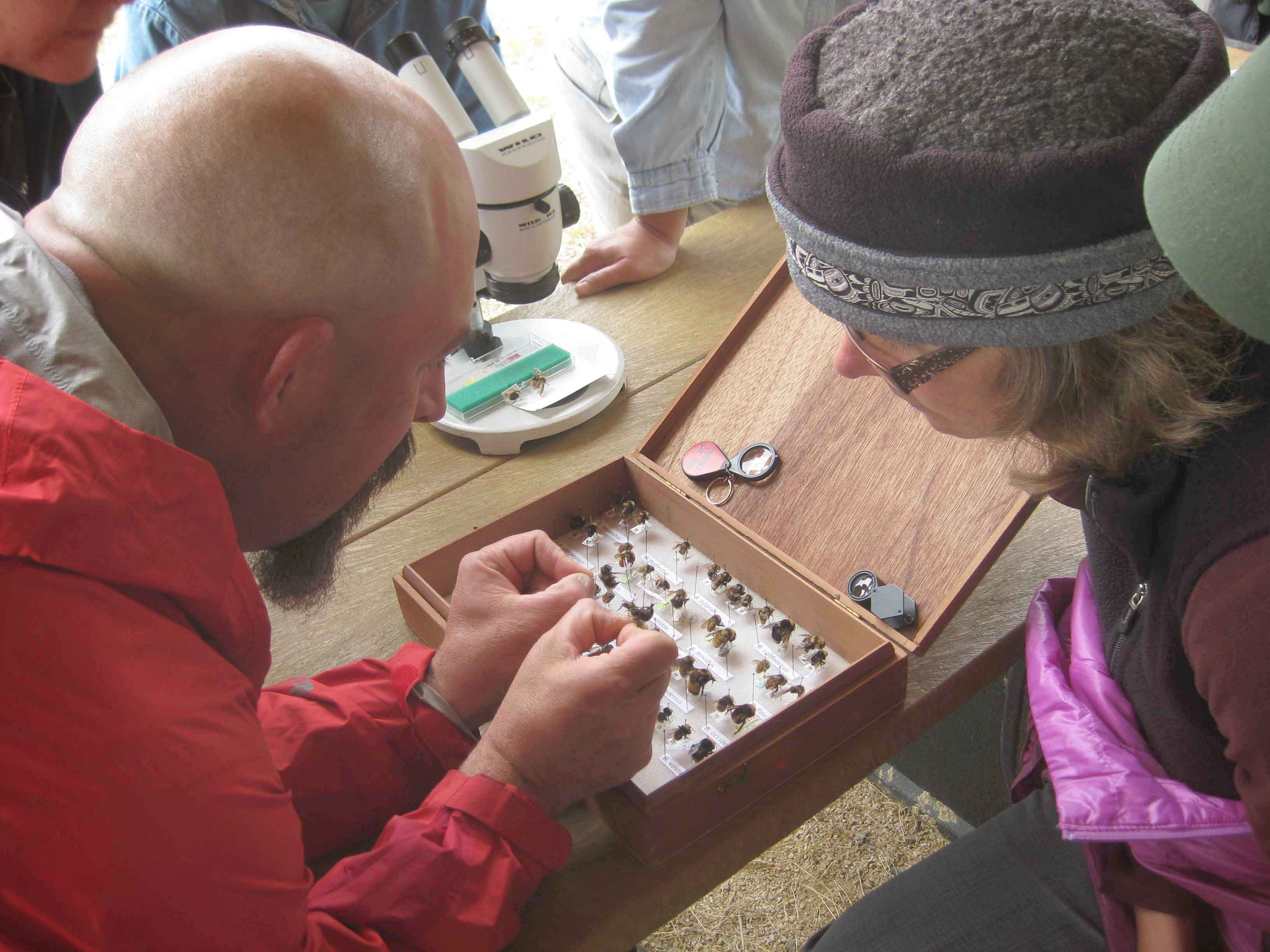 The host of our program, Dr. Jamie Strange, brought a microscope, a tray of mounted bumblebees, and handouts describing how to identify bees to the covered picnic area at Netul Landing on the grounds of the Lewis and Clark National Historic Park – Fort Clatsop. Dr. Strange began the workshop with an hour-long discussion about bumblebees, describing their morphology, biology, and natural history, as well as describing the technique he and his colleagues have devised for the non-lethal acquisition of data about each bee captured.
The host of our program, Dr. Jamie Strange, brought a microscope, a tray of mounted bumblebees, and handouts describing how to identify bees to the covered picnic area at Netul Landing on the grounds of the Lewis and Clark National Historic Park – Fort Clatsop. Dr. Strange began the workshop with an hour-long discussion about bumblebees, describing their morphology, biology, and natural history, as well as describing the technique he and his colleagues have devised for the non-lethal acquisition of data about each bee captured.
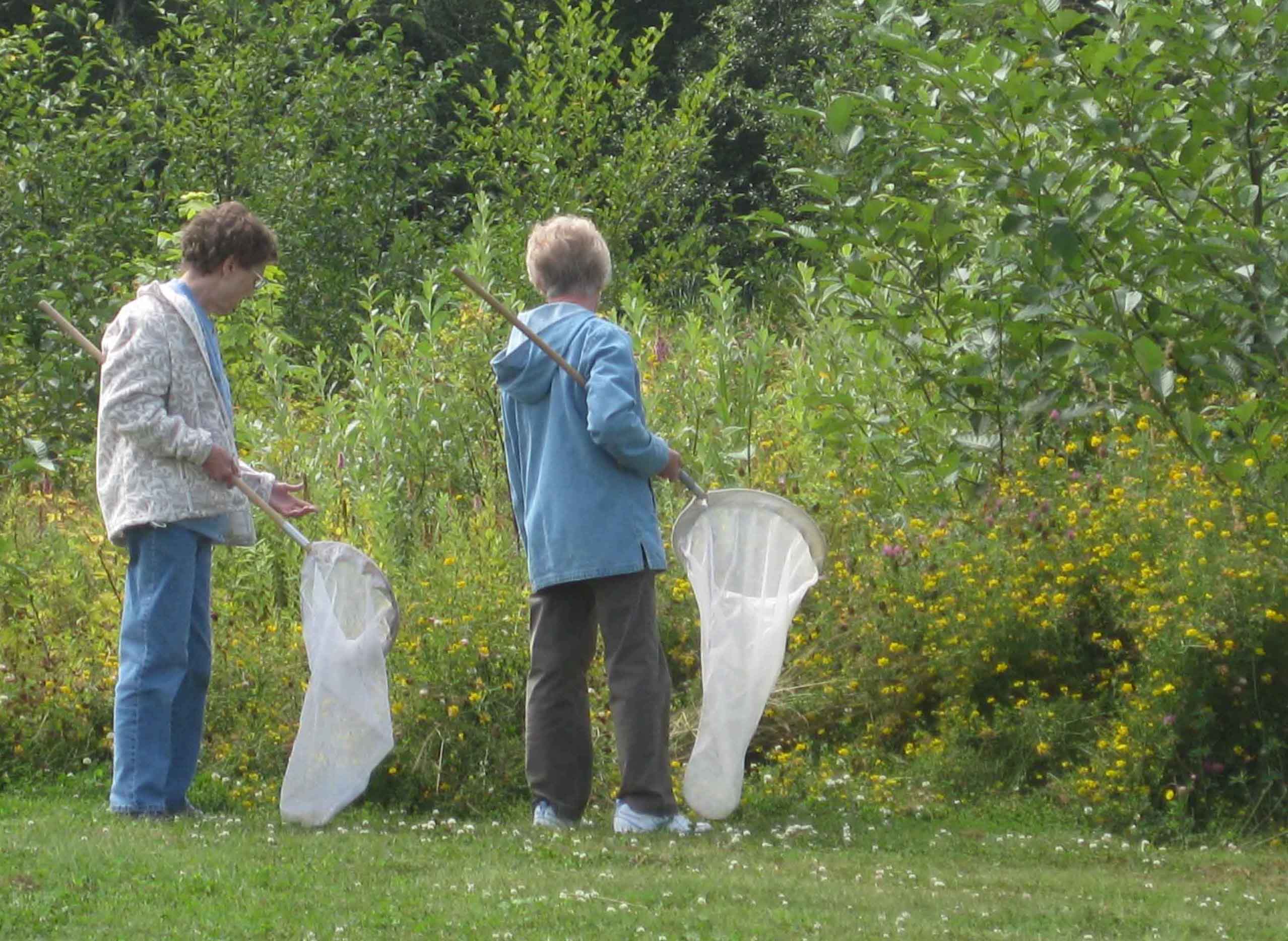 We gathered up butterfly nets, filled our pockets with collection vials, and tromped out into the weedy lot surrounding the picnic shelter. The dominant plant next to the shelter was birdfoot trefoil – very popular with the bees. Dr. Strange demonstrated how to capture a bumblebee by holding the tip of the net up straight as he lowered the opening around a target bee. With this method, the bee flies up to the top of the net and you grasp the neck of the net below the bee to keep it from flying out. Then you slip the vial and lid into the net with the bee and ease the bee into the vial, and then the lid onto the vial before removing your hands from the net.
We gathered up butterfly nets, filled our pockets with collection vials, and tromped out into the weedy lot surrounding the picnic shelter. The dominant plant next to the shelter was birdfoot trefoil – very popular with the bees. Dr. Strange demonstrated how to capture a bumblebee by holding the tip of the net up straight as he lowered the opening around a target bee. With this method, the bee flies up to the top of the net and you grasp the neck of the net below the bee to keep it from flying out. Then you slip the vial and lid into the net with the bee and ease the bee into the vial, and then the lid onto the vial before removing your hands from the net.
The group spread out over the small park area, searching for bumblebees to capture. We hunted in knee-high birdfoot trefoil, mowed lawn with abundant white clover, and chest-high blackberry bushes. I was reluctant to participate in the capture, and had wandered off without a net. But then I saw it – a yellow bumblebee foraging on the blackberry flowers. I called out for a net and captured the bee.
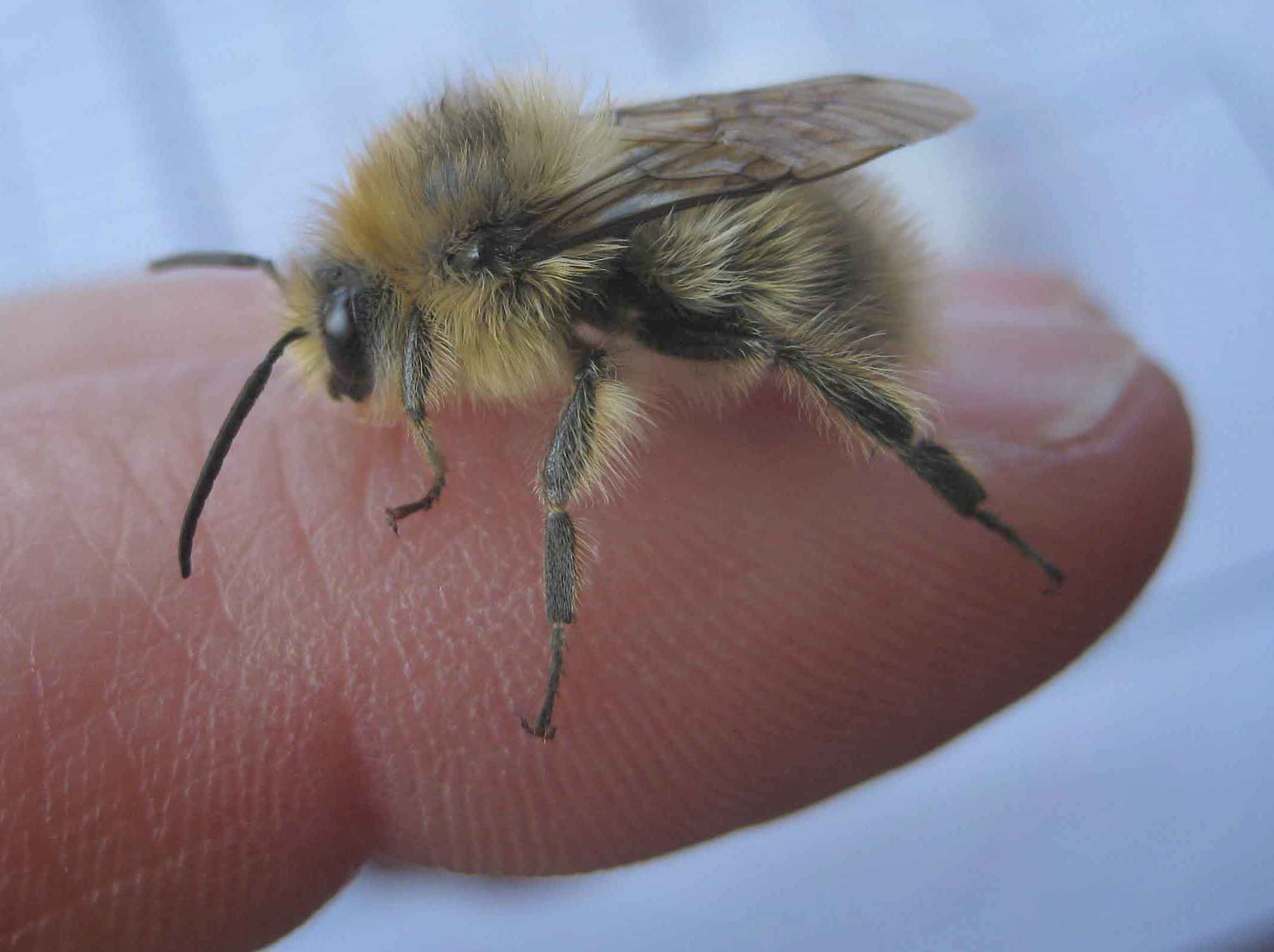 The yellow bumblebee has been my IDing nemesis since my first native bee surveys at Cape Disappointment State Park. I couldn’t find it in any of my field guides, and it was too fast to capture a good enough photo to send off for an ID. Since then I have managed to capture a few good shots and still could not get a positive identification. I began to suspect that it was a male of one of the common species, since all the ID photos I was seeing were of females. When Dr. Strange took a look at the creature in the vial he confirmed that it was a male – Bombus mixtus.
The yellow bumblebee has been my IDing nemesis since my first native bee surveys at Cape Disappointment State Park. I couldn’t find it in any of my field guides, and it was too fast to capture a good enough photo to send off for an ID. Since then I have managed to capture a few good shots and still could not get a positive identification. I began to suspect that it was a male of one of the common species, since all the ID photos I was seeing were of females. When Dr. Strange took a look at the creature in the vial he confirmed that it was a male – Bombus mixtus.
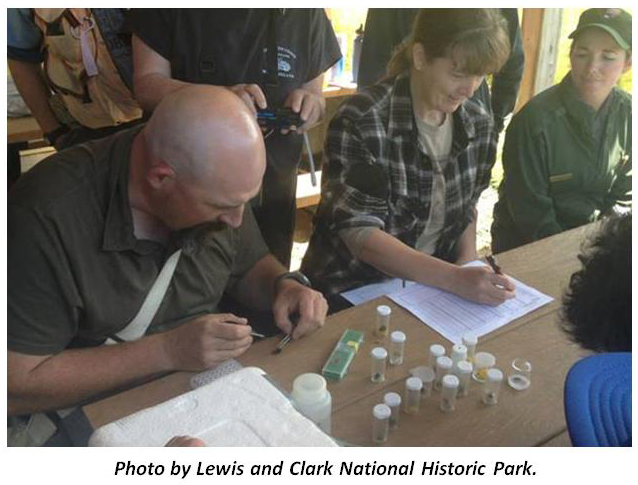 We gathered back at the picnic shelter and grouped our captured bees according to the type of plant they’d been found on. Dr. Strange had brought a little Styrofoam cooler with a couple of ice packs for chilling the bees. The cold causes them to become drowsy and slow, making it easier to clip a DNA sample off their legs and manipulate them for identification. I volunteered to record data as Dr. Strange collected samples and identified species.
We gathered back at the picnic shelter and grouped our captured bees according to the type of plant they’d been found on. Dr. Strange had brought a little Styrofoam cooler with a couple of ice packs for chilling the bees. The cold causes them to become drowsy and slow, making it easier to clip a DNA sample off their legs and manipulate them for identification. I volunteered to record data as Dr. Strange collected samples and identified species.
We caught 33 specimens during the survey: one B. flavifrons, three B. vosnesenskii, six B. californicus, eight B. mixtus, and fifteen B. caliginosus. Every female bee donated a piece of a center leg to the gridded vials, and two or three specimens of each species went into the “voucher” jar. After sampling, the bees were set on the picnic table to warm up and eventually fly away.
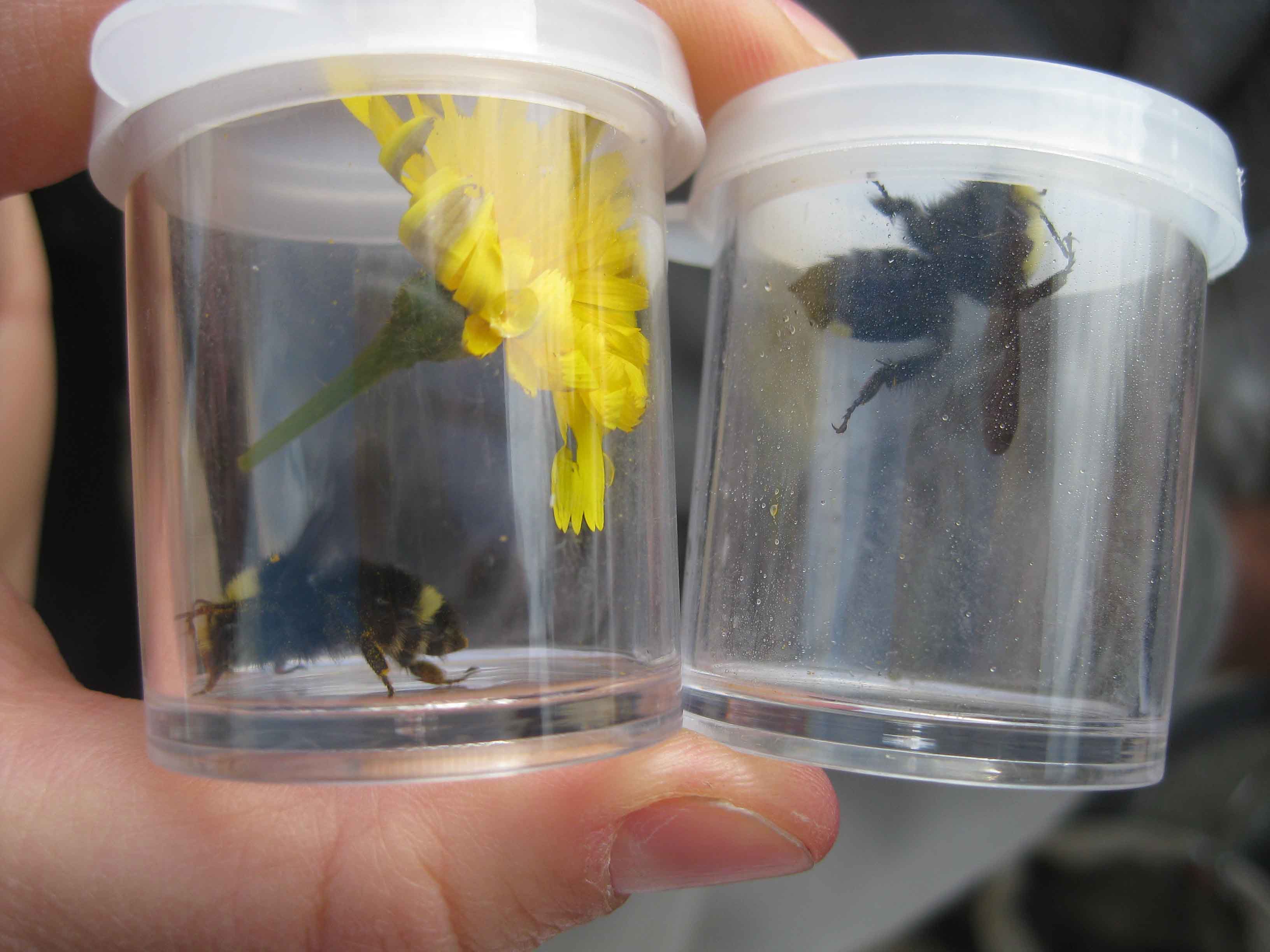 Though I prefer to witness Life in an unobtrusive way, I understand the benefits of being able to gather information directly from the animal. By spending time looking over Dr. Strange’s shoulder as he worked with the bees, I learned a great deal of information that I miss when watching these animals in the field. I was also reminded that the scientists and researchers who study plants and animals often have as deep a love for the critters as I do. They are not killing them out of spite, but to further our knowledge about their needs, which helps drive policy in the protection of these animals and their habitats.
Though I prefer to witness Life in an unobtrusive way, I understand the benefits of being able to gather information directly from the animal. By spending time looking over Dr. Strange’s shoulder as he worked with the bees, I learned a great deal of information that I miss when watching these animals in the field. I was also reminded that the scientists and researchers who study plants and animals often have as deep a love for the critters as I do. They are not killing them out of spite, but to further our knowledge about their needs, which helps drive policy in the protection of these animals and their habitats.
To see more photos from the Bumblebee Workshop, visit my Facebook page at /BeeMentor.